Inversion and Effect Research on Dust Distribution of Urban Forests in Beijing
Abstract
1. Introduction
2. Methods and Materials
2.1. Study Area
2.2. Experimental Design
2.3. Data Processing
2.3.1. Processing of Remote-Sensing Data
2.3.2. Spectrum Collection and Dust Measurement on Leaf Surface
2.3.3. Vegetation Index
2.3.4. Urban Landscape Pattern Indices
2.3.5. Calculation of ADA Intensity
3. Results
3.1. Effect of Absorbed Dust on Leaf Spectrum
3.1.1. Effect of Absorbed Dust on Leaf Spectral Reflectance
3.1.2. Correlation between Amount of Foliar Dust and Spectral Data
3.2. Response of Vegetation Indices to ADA
3.3. Construction and Verification of Foliar ADA Inversion Model
3.3.1. Establishment of Foliar ADA Inversion Model
3.3.2. Inversion and Verification of Spatial Distribution of ADA
3.4. Urban Forest Landscape Pattern and Dust Retention Effect
3.4.1. Influence of Urban Forest Landscape Percentage on Dust Intensity
3.4.2. Influence of Urban Forest Patch Area and Shape on ADA Intensity
4. Discussion
5. Conclusions
- (1)
- The results show a positive correlation between spectral reflectance and the amount of dust at 350–722 nm with a maximum correlation at 672 nm. The range in the green band from 510 to 580 nm is concave, which indicates that the sensitivity of the green band to dust is weaker than that of the other bands. A negative correlation was observed within 722–1050 nm, where the negative correlation from 722 to 801 nm decreases rapidly and the negative correlation reaches a minimum of −0.35 at 802 nm. Then, the negative correlation slowly changes from 801 to 1050 nm. Therefore, the red band and infrared band can be used to construct a dust inversion model. The decision coefficient R2 of the model constructed by NDPI reached a maximum of 0.879.
- (2)
- Using the Sentinel-2 satellite remote-sensing images on 22 November 2018 and 15 January 2019, we determined the distribution of dust on the leaves of the evergreen vegetation in Beijing in the winter (mainly from Euonymus Japonicus). The inversion results were verified by PM10 and measured data, and were proven to be reasonable. The results of the inversion show that the mean ADA in the enclosed area was lower than that in semi-closed and open areas. The regional distribution of high ADA in the urban area of Beijing was higher in the south, and ADA in the core area in the second ring of Beijing was less than in other loops with a tendency of the ADA to decrease from city center to the surrounding area.
- (3)
- Euonymus japonicus woodland has a positive effect on the urban dust environment. The size, LSI, and PLAND of patches of Euonymus japonicus significantly affect the ADA intensity. The dust retention ability is affected by the vegetation coverage rate, and generally, the higher the vegetation coverage rate is, the larger the ADA intensity is; however, this is not a linear positive correlation. Within the study area, when the PLAND of Euonymus japonicus woodland is higher than 40%, its ADA intensity remains basically unchanged. LSI affects the ADA intensity. LSI is negatively correlated with ADA intensity, and the reduction in the overall shape complexity of forestland can enhance the dust retention effect of the surrounding urban areas.
Author Contributions
Funding
Acknowledgments
Conflicts of Interest
References
- Mage, D.; Ozolins, G.; Peterson, P.; Webster, A.; Orthofer, R.; Vandeweerd, V. Urban air pollution in megacities of the world. Atmos. Environ. 1996, 30, 681–686. [Google Scholar] [CrossRef]
- Shi, G.T.; Chen, Z.L.; Xu, S.Y.; Wang, L.; Zhang, J.; Li, H.W.; Li, L.N. Characteristics of heavy metal pollution in soil and dust of urban parks in Shanghai. Environ. Sci. 2007, 28, 238–242. [Google Scholar]
- Das, R.; Das, S.N.; Misra, V.N. Chemical composition of rainwater and dustfall at Bhubaneswar in the east coast of India. Atmos. Environ. 2005, 39, 5908–5916. [Google Scholar] [CrossRef]
- Levin, A. The non-medical misuse of fenfluramine by drug-dependent young South Africans. Postgrad. Med. J. 1975, 51, 186–188. [Google Scholar] [PubMed]
- Xia, T.; Kovochich, M.; Nel, A.E. Impairment of mitochondrial function by particulate matter (PM) and their toxic components: Implications for PM-induced cardiovascular and lung disease. Front. Biosci. J. Virtual Libr. 2007, 12, 1238. [Google Scholar] [CrossRef]
- Taniyama, Y.; Griendling, K.K. Reactive oxygen species in the vasculature: Molecular and cellular mechanisms. Hypertension 2003, 42, 1075–1081. [Google Scholar] [CrossRef] [PubMed]
- Platts-Mills, T.A.; Chapman, M.D. Dust mites: Immunology, allergic disease, and environmental control. J. Allergy Clin. Immunol. 1987, 80, 755–775. [Google Scholar] [CrossRef]
- Bates, D.V. Lines that connect: Assessing the causality inference in the case of particulate pollution. Environ. Health Perspect. 2000, 108, 91–92. [Google Scholar] [CrossRef] [PubMed]
- Yang, J.; Mcbride, J.; Zhou, J.; Sun, Z. The urban forest in Beijing and its role in air pollution reduction. Urban For. Urban Green. 2005, 3, 65–78. [Google Scholar] [CrossRef]
- Nowak, D.J.; Dwyer, J.F. Understanding the Benefits and Costs of Urban Forest Ecosystems. In Urban and Community Forestry in the Northeast; Kuser, J.E., Ed.; Springer: Berlin/Heidelberg, Germany, 2007; pp. 25–46. [Google Scholar]
- Sehmel, G.A. Particle and gas dry deposition: A review. Atmos. Environ. 1980, 14, 983–1011. [Google Scholar] [CrossRef]
- Kong, S.F.; Lu, B.; Ji, Y.; Bai, Z.; Xu, Y.; Liu, Y.; Jiang, H. Distribution and sources of polycyclic aromatic hydrocarbons in size-differentiated re-suspended dust on building surfaces in an oilfield city, China. Atmos. Environ. 2012, 55, 7–16. [Google Scholar] [CrossRef]
- Wang, X.L.; Wang, C. Research status and prospects on functions of urban forests in regulating the air particulate matter. Acta Ecol. Sin. 2014, 34, 1910–1921. [Google Scholar]
- Qiu, Y.; Guan, D.-S.; Song, W.-W.; Peart, M.R. The dust retention effect of urban vegetation in Huizhou, Guangdong Province. Acta Ecol. Sin. 2008, 28, 2455–2462. [Google Scholar]
- Tallis, M.; Taylor, G.; Sinnett, D.; Freer-Smith, P. Estimating the removal of atmospheric particulate pollution by the urban tree canopy of London, under current and future environments. Landsc. Urban Plan. 2011, 103, 129–138. [Google Scholar] [CrossRef]
- Prusty, B.A.K.; Mishra, P.C.; Azeez, P.A. Dust accumulation and leaf pigment content in vegetation near the national highway at Sambalpur, Orissa, India. Ecotoxicol. Environ. Saf. 2005, 60, 228–235. [Google Scholar] [CrossRef]
- Kim, H.S.; Chung, Y.S. Characteristics of mass concentrations depending on synoptic features during airborne dustfall episodes observed at Cheongwon in Korea in 2005. Asia-Pac. J. Atmos. Sci. 2010, 46, 209–216. [Google Scholar] [CrossRef]
- Zheng, J.G. Study on the Dust-Retention Capacity Resulting from Greenbelt of the Main Roads in Xuchang. Adv. Mater. Res. 2013, 726–731, 1805–1808. [Google Scholar] [CrossRef]
- Guo, W.; Shen, T.Y.; Zheng, S.; Wang, W.; Liu, C. Research advances on mechanisms and rules of dust retention of the urban green areas. Ecol. Environ. Sci. 2010, 19, 1465–1470. [Google Scholar]
- Freersmith, P.H.; Holloway, S.; Goodman, A. The uptake of particulates by an urban woodland: Site description and particulate composition. Environ. Pollut. 1997, 95, 27–35. [Google Scholar] [CrossRef]
- Shen, Z.X.; Cao, J.J.; Li, X.X.; Wang, Y.Q.; Jie, D.M.; Zhang, X.Y. Chemical characteristics of aerosol particles (PM 2.5) at a site of Horqin Sand-land in northeast China. J. Environ. Sci. 2006, 18, 701. [Google Scholar]
- Liu, L.; Guan, D.; Peart, M.R. The morphological structure of leaves and the dust-retaining capability of afforested plants in urban Guangzhou, South China. Environ. Sci. Pollut. Res. Int. 2012, 19, 3440–3449. [Google Scholar] [CrossRef] [PubMed]
- Li, J.Y.; Guo, L.S.; Duan, G.D. Patterns of green area in residential districts. J. Beijing For. Univ. 2002, 24, 102–106. [Google Scholar]
- Zhang, Q. Status and Prospects of Urban Landscape Plants’ Application in Beijing. Chin. Landsc. Architect. 2011, 1, 81–85. [Google Scholar]
- Zhao, Y.; Li, S.; Yan, Z. The Effect of Greenland on Absorbed Dust and Its Assessment Method. J. Huazhong Agric. Univ. 2002, 21, 582–586. [Google Scholar]
- Letts, M.G.; Phelan, C.A.; Johnson, D.R.; Rood, S.B. Seasonal photosynthetic gas exchange and leaf reflectance characteristics of male and female cottonwoods in a riparian woodland. Tree Physiol. 2008, 28, 1037–1048. [Google Scholar] [CrossRef] [PubMed]
- Evrendilek, F.; Gulbeyaz, O. Deriving Vegetation Dynamics of Natural Terrestrial Ecosystems from MODIS NDVI/EVI Data over Turkey. Sensors 2008, 8, 5270–5302. [Google Scholar] [CrossRef] [PubMed]
- Häusler, M.; Silva, J.M.N.; Cerasoli, S.; Lópezsaldaña, G.; Pereira, J.M.C. Modelling spectral reflectance of open cork oak woodland: A simulation analysis of the effects of vegetation structure and background. Int. J. Remote Sens. 2016, 37, 492–515. [Google Scholar] [CrossRef]
- Wang, C.; Chen, J.; Wu, J.; Tang, Y.; Shi, P.; Black, T.A.; Zhu, K. A snow-free vegetation index for improved monitoring of vegetation spring green-up date in deciduous ecosystems. Remote Sens. Environ. 2017, 196, 1–12. [Google Scholar] [CrossRef]
- Malthus, T.J.; Dekker, A.G. First derivative indices for the remote sensing of inland water quality using high spectral resolution reflectance. Environ. Int. 1995, 21, 221–232. [Google Scholar] [CrossRef]
- Ram, S.S.; Kumar, R.V.; Chaudhuri, P.; Chanda, S.; Santra, S.C.; Sudarshan, M.; Anindita, C. Physico-chemical characterization of street dust and re-suspended dust on plant canopies: An approach for finger printing the urban environment. Ecol. Indic. 2014, 36, 334–338. [Google Scholar] [CrossRef]
- Yan, X.; Shi, W.; Zhao, W.; Luo, N. Mapping dustfall distribution in urban areas using remote sensing and ground spectral data. Sci. Total Environ. 2015, 506–507, 604–612. [Google Scholar] [CrossRef]
- Luo, N.N.; Zhao, W.J.; Yan, X. Impact of Dust-Fall on Spectral Features of Plant Leaves. Spectrosc. Spectral Analysis. 2013, 33, 2715–2720. [Google Scholar]
- Wang, H.F.; Fang, N.; Yan, X.; Chen, F.T.; Xiong, Q.L.; Zhao, W.J. Retrieving dustfall distribution in Beijing City based on ground spectral data and remote sensing. Spectrosc. Spectr. Anal. 2016, 36, 2911–2918. [Google Scholar]
- Jie, P.; Xiang, H.Y.; Wang, J.Q.; Wen-Jun, J.I.; Liu, W.Y.; Chi, C.M.; Zuo, T.-G. Quantitative model of foliar dustfall content using hyperspectral remote sensing. J. Infrared Millim. Waves. 2013, 32, 313. [Google Scholar]
- Bacci, L.; Morabito, M.; Raschi, A.; Ugolini, F. Thermohygrometric conditions of some urban parks of Florence (Italy) and their effects on human well-being. Trees 2003, 6, 49. [Google Scholar]
- Tran, H.; Uchihama, D.; Ochi, S.; Yasuoka, Y. Assessment with satellite data of the urban heat island effects in Asian mega cities. Int. J. Appl. Earth Obs. Geoinf. 2006, 8, 34–48. [Google Scholar] [CrossRef]
- Pesola, L.; Cheng, X.; Sanesi, G.; Colangelo, G.; Elia, M.; Lafortezza, R. Linking above-ground biomass and biodiversity to stand development in urban forest areas: A case study in Northern Italy. Landsc. Urban Plan. 2017, 157, 90–97. [Google Scholar] [CrossRef]
- Alvey, A.A. Promoting and preserving biodiversity in the urban forest. Urban For. Urban Green. 2006, 5, 195–201. [Google Scholar] [CrossRef]
- Georgi, J.N.; Dimitriou, D. The contribution of urban green spaces to the improvement of environment in cities: Case study of Chania, Greece. Build. Environ. 2010, 45, 1401–1414. [Google Scholar] [CrossRef]
- Oliveira, S.; Andrade, H.; Vaz, T. The cooling effect of green spaces as a contribution to the mitigation of urban heat: A case study in Lisbon. Build. Environ. Pollut. 2011, 46, 2186–2194. [Google Scholar] [CrossRef]
- Mackey, C.W.; Lee, X.; Smith, R.B. Remotely sensing the cooling effects of city scale efforts to reduce urban heat island. Build. Environ. 2012, 49, 348–358. [Google Scholar] [CrossRef]
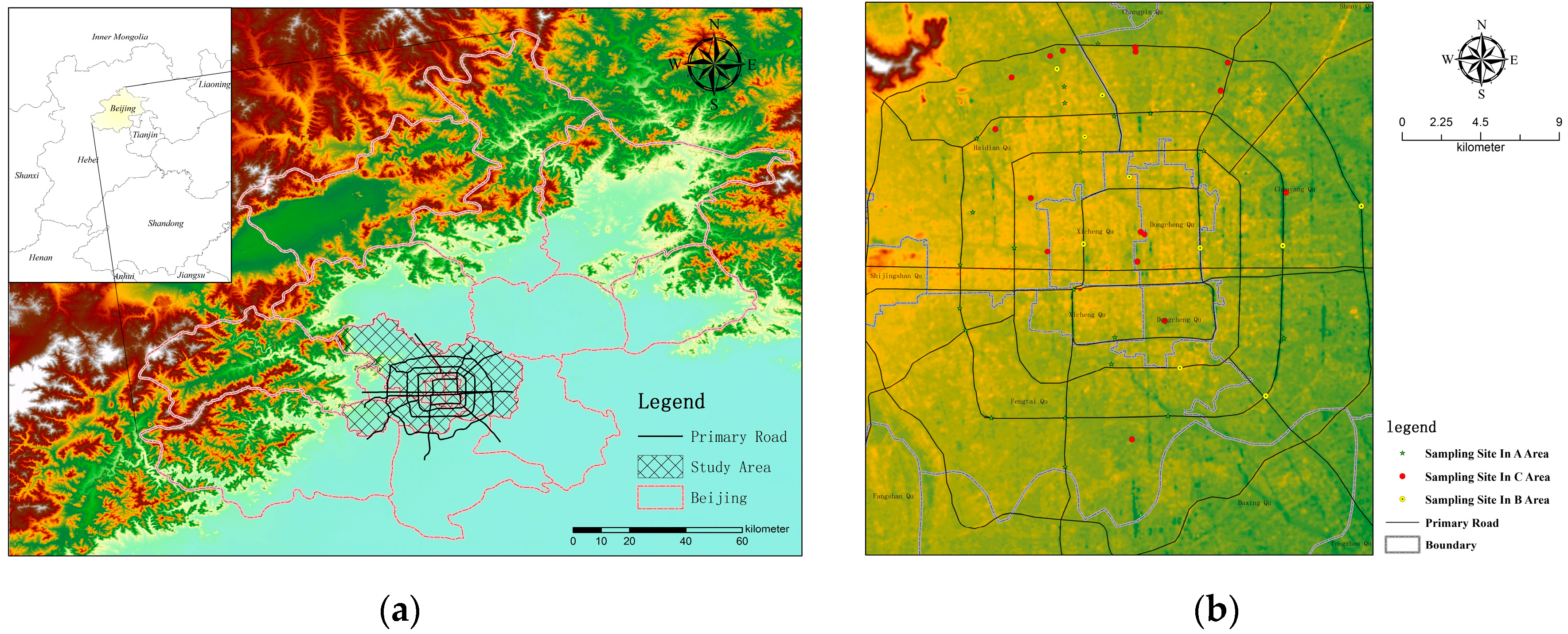
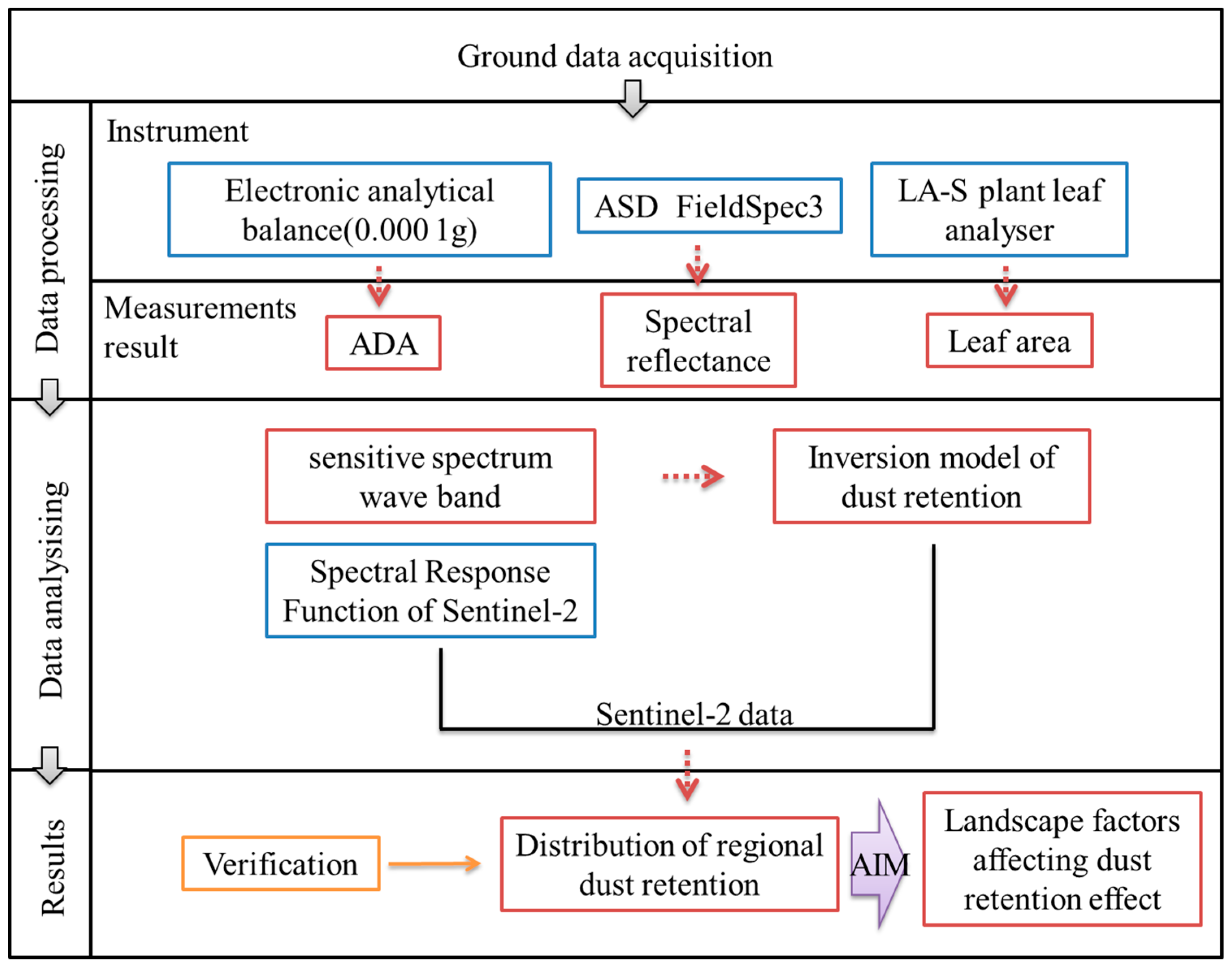
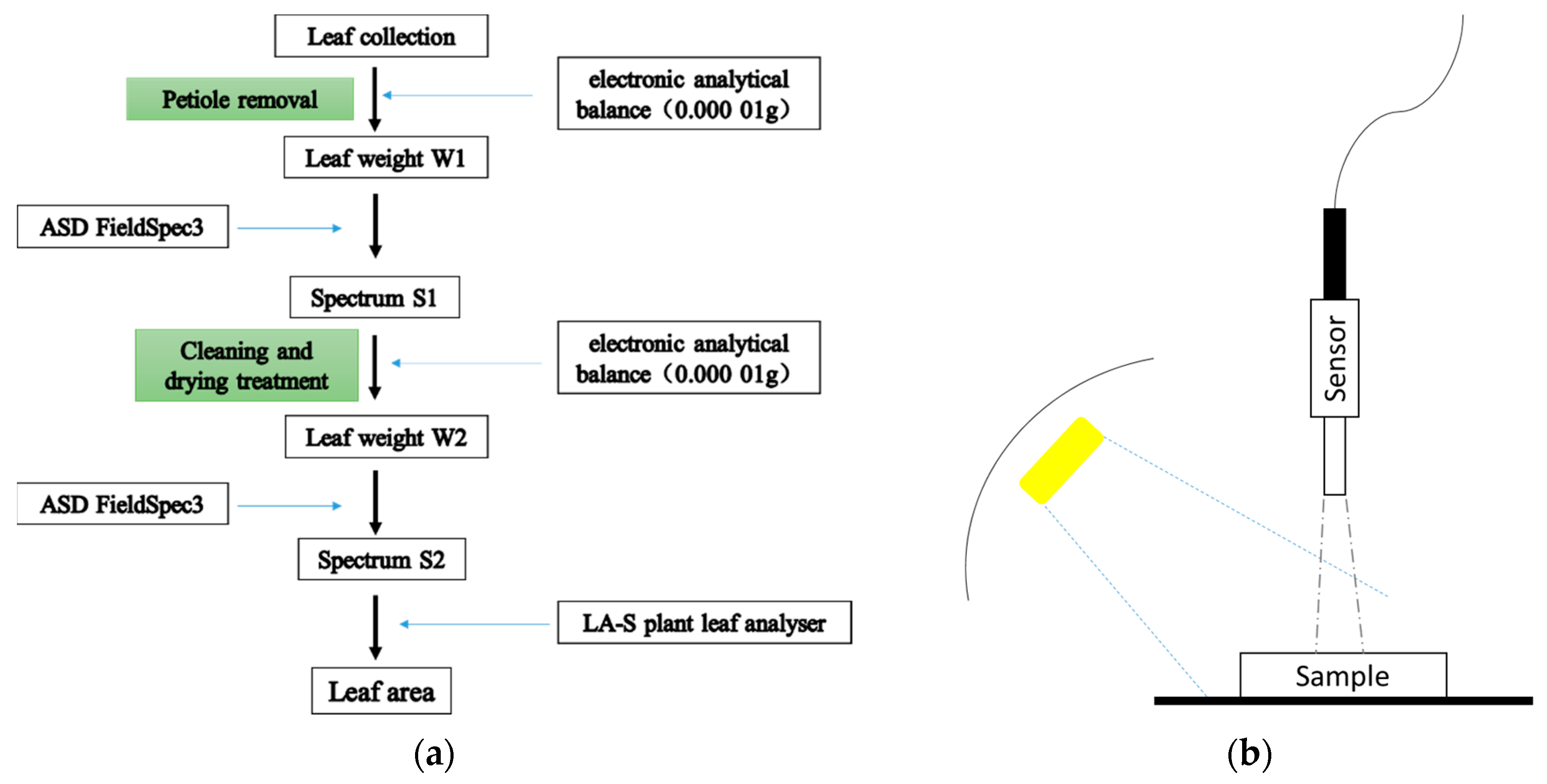

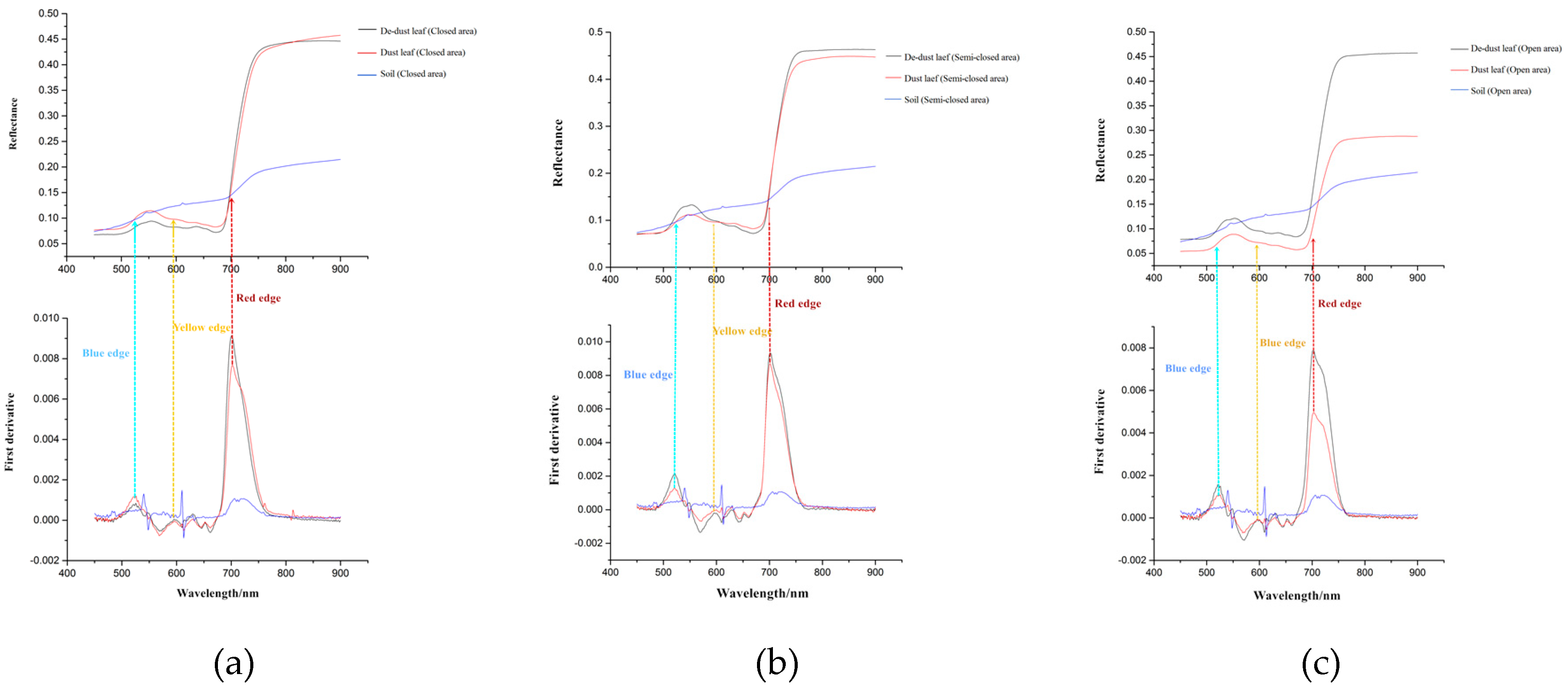
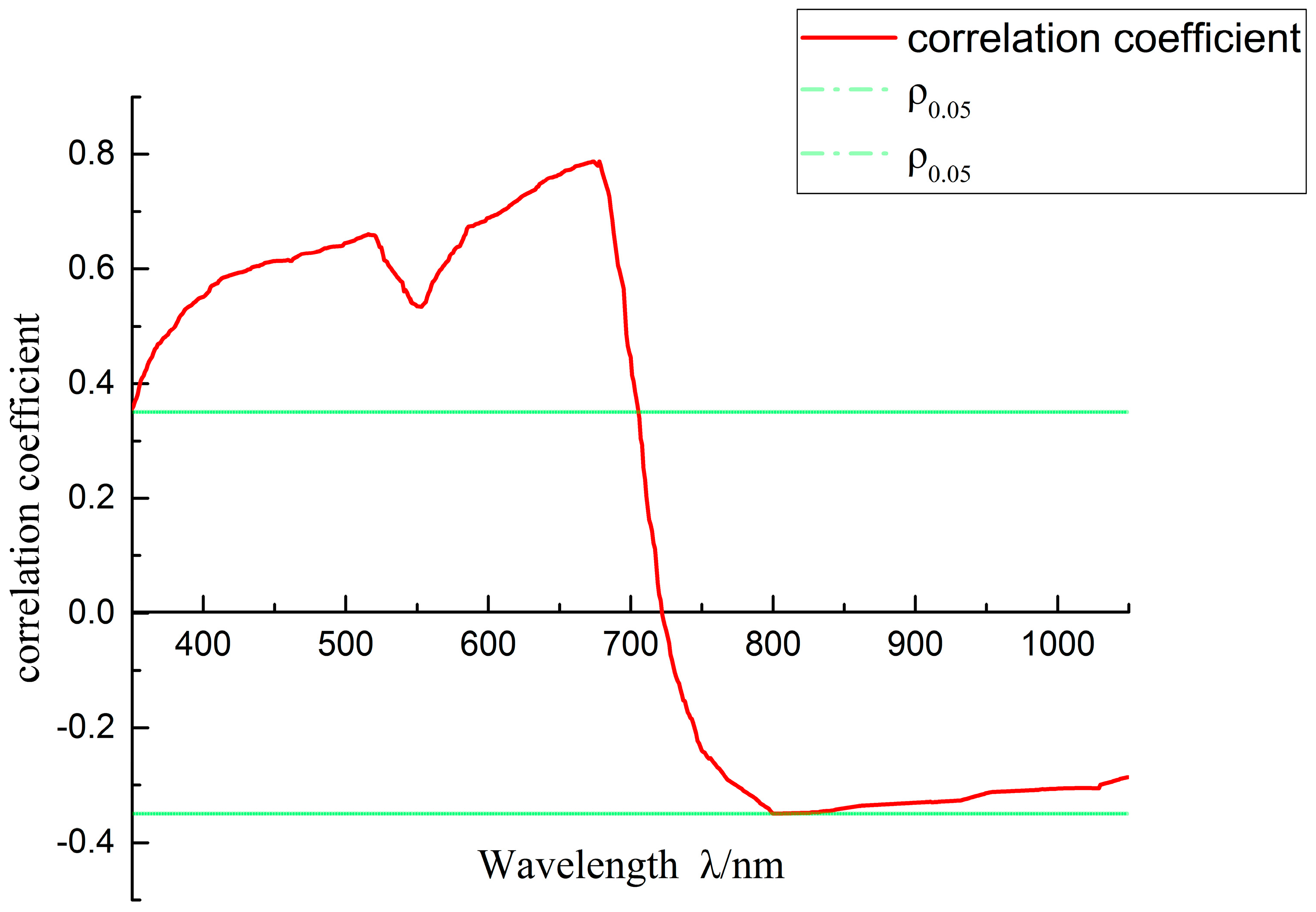
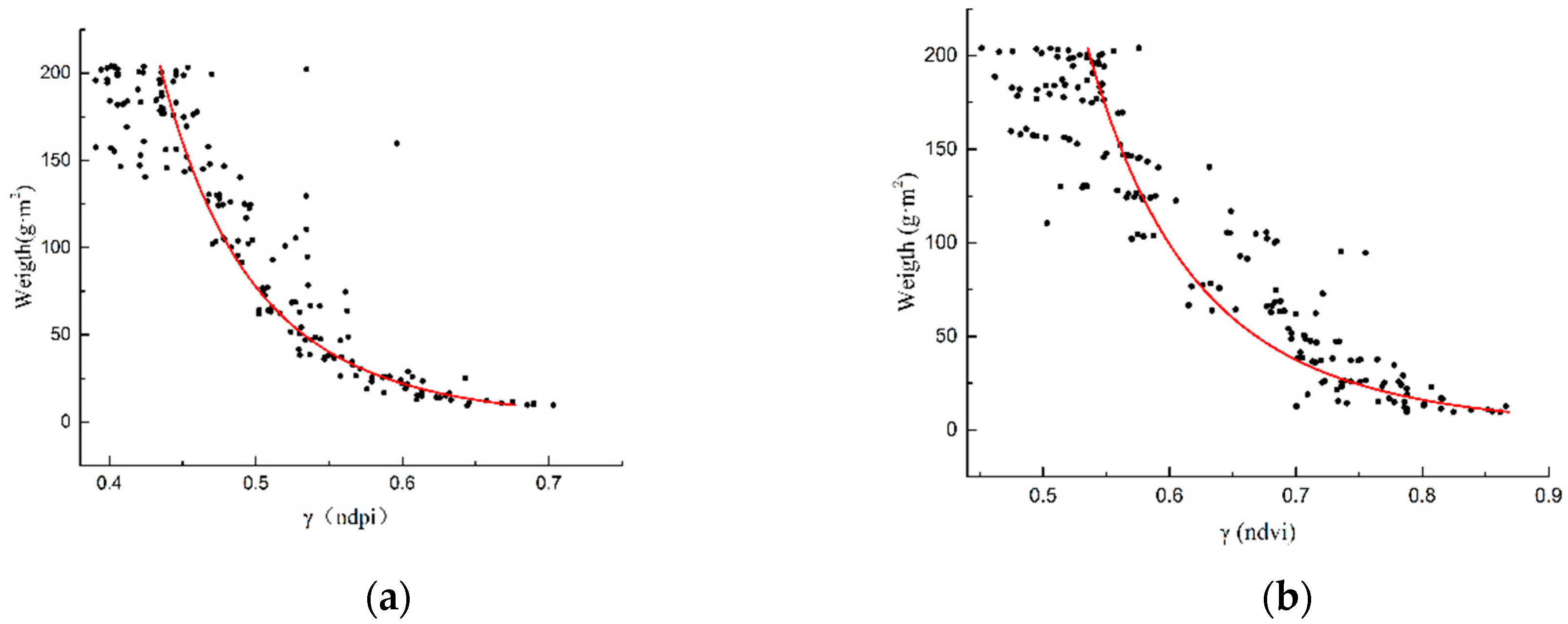

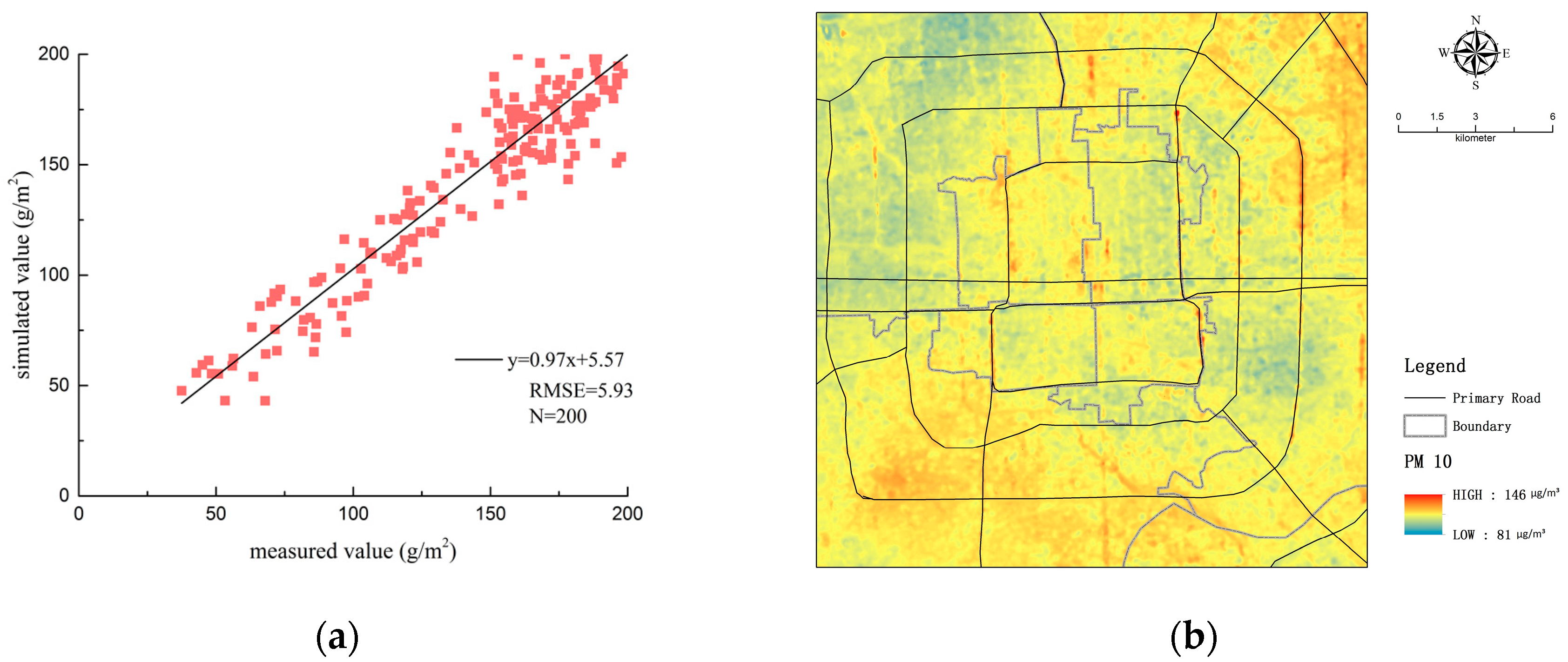
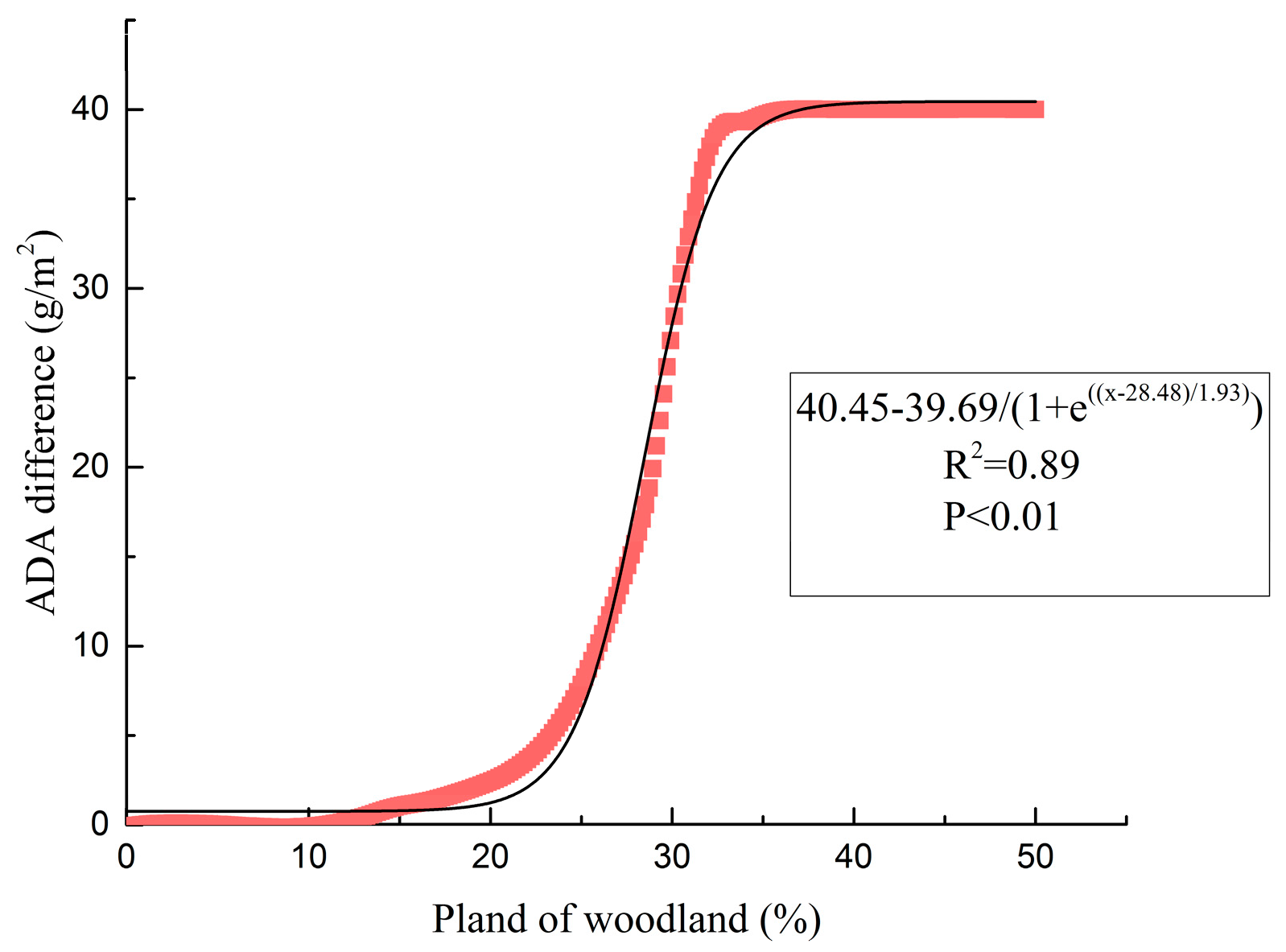
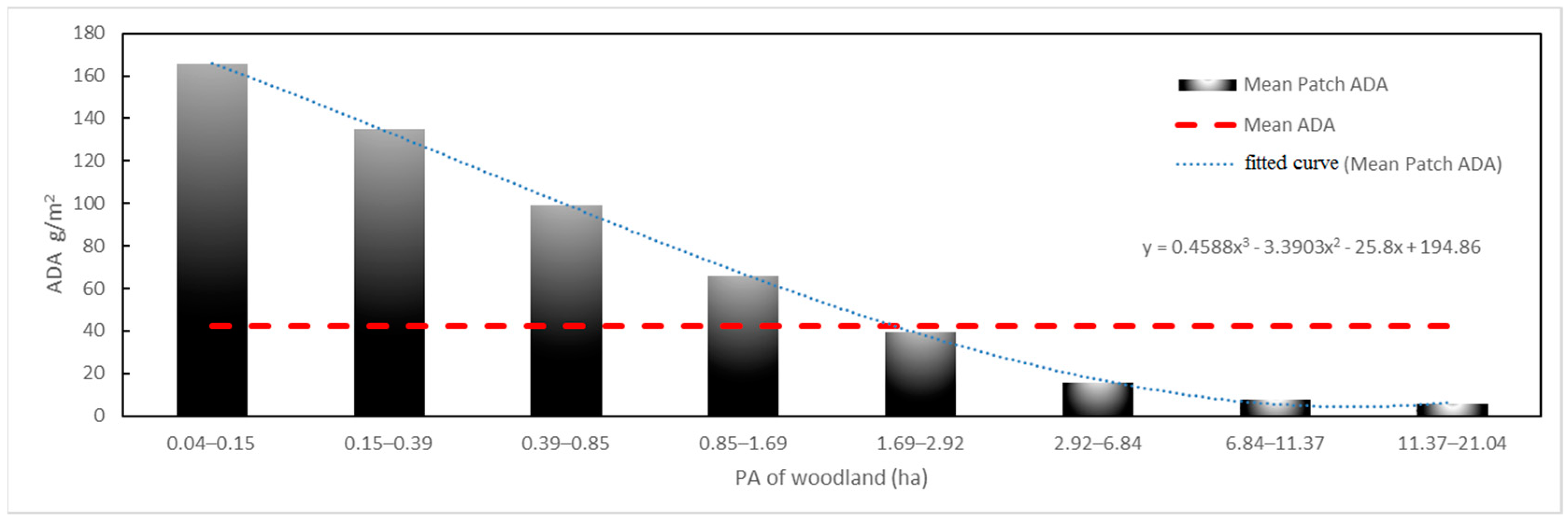

| Band | Name | Band Width (nm) | Central Wavelength (nm) | Resolution (m) |
|---|---|---|---|---|
| B01 | Coastal aerosol | 430–457 | 443.9 | 60 |
| B02 | Blue | 440–538 | 496.6 | 10 |
| B03 | Green | 537–582 | 560 | 10 |
| B04 | Red | 646–684 | 664.5 | 10 |
| B05 | Vegetation red edge1 | 694–713 | 703.9 | 20 |
| B06 | Vegetation red edge 2 | 731–749 | 740.2 | 20 |
| B07 | Vegetation red edge 3 | 769–797 | 782.5 | 20 |
| B08 | Near-infrared (NIR) | 769–908 | 835.1 | 10 |
| B08A | Vegetation red edge | 848–881 | 864.8 | 20 |
| B09 | Water vapor | 932–958 | 945.0 | 60 |
| B10 | Short-wave infrared (SWIR)-Cirrus | 1337–1412 | 1373.5 | 60 |
| B11 | SWIR 1 | 1539–1682 | 1610 | 20 |
| B12 | SWIR 2 | 2078–2320 | 1290 | 20 |
| Landscape Metric | Formula | Description | Unit |
|---|---|---|---|
| Patch index | A | The area of the patch | Hectare |
| Landscape shape index | The most straightforward measure of overall shape complexity | - | |
| Percentage of landscape | The proportion of total area occupied by a particular patch type; a measure of landscape composition and dominance of patch types | Percent |
| Vegetation Index | Closed Area | Semi-closed Area | Open Area | |||||||||
|---|---|---|---|---|---|---|---|---|---|---|---|---|
| RPD | RPD | RPD | ||||||||||
| RNDVI | 0.87 ** | 0.66 ** | 9.57 | 2.42 | 0.89 ** | 0.67 ** | 9.32 | 2.31 | 0.90 ** | 0.70 ** | 9.06 | 2.27 |
| RNDPI | 0.92 ** | 0.73 ** | 6.46 | 2.20 | 0.93 ** | 0.78 ** | 6.13 | 2.11 | 0.93 ** | 0.77 ** | 5.89 | 2.18 |
| REVI | 0.64 | 0.50 | 12.46 | 1.31 | 0.67 | 0.56 | 11.87 | 1.28 | 0.70 | 0.56 | 11.45 | 1.25 |
| RSAVI | 0.75 | 0.53 | 11.58 | 1.36 | 0.77 | 0.57 | 10.69 | 1.34 | 0.79 | 0.58 | 10.33 | 1.29 |
| Independent Variable | Retrieval Model | Coefficient of Determination (R2) |
|---|---|---|
| RNDVI | 0.840 | |
| RNDPI | 0.879 |
© 2019 by the authors. Licensee MDPI, Basel, Switzerland. This article is an open access article distributed under the terms and conditions of the Creative Commons Attribution (CC BY) license (http://creativecommons.org/licenses/by/4.0/).
Share and Cite
Su, K.; Yu, Q.; Hu, Y.; Liu, Z.; Wang, P.; Zhang, Q.; Zhu, J.; Niu, T.; Yue, D. Inversion and Effect Research on Dust Distribution of Urban Forests in Beijing. Forests 2019, 10, 418. https://doi.org/10.3390/f10050418
Su K, Yu Q, Hu Y, Liu Z, Wang P, Zhang Q, Zhu J, Niu T, Yue D. Inversion and Effect Research on Dust Distribution of Urban Forests in Beijing. Forests. 2019; 10(5):418. https://doi.org/10.3390/f10050418
Chicago/Turabian StyleSu, Kai, Qiang Yu, Yahui Hu, Zhili Liu, Pengchong Wang, Qibin Zhang, Jiyou Zhu, Teng Niu, and Depeng Yue. 2019. "Inversion and Effect Research on Dust Distribution of Urban Forests in Beijing" Forests 10, no. 5: 418. https://doi.org/10.3390/f10050418
APA StyleSu, K., Yu, Q., Hu, Y., Liu, Z., Wang, P., Zhang, Q., Zhu, J., Niu, T., & Yue, D. (2019). Inversion and Effect Research on Dust Distribution of Urban Forests in Beijing. Forests, 10(5), 418. https://doi.org/10.3390/f10050418





